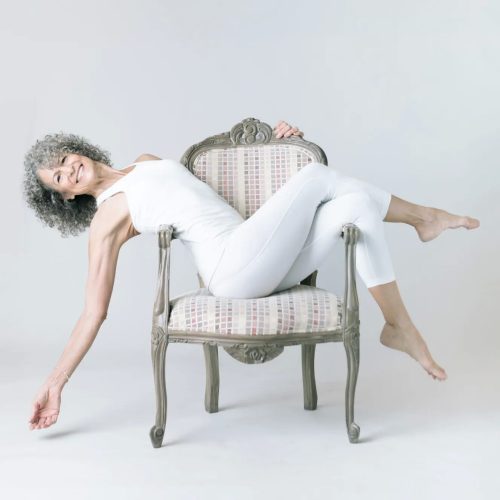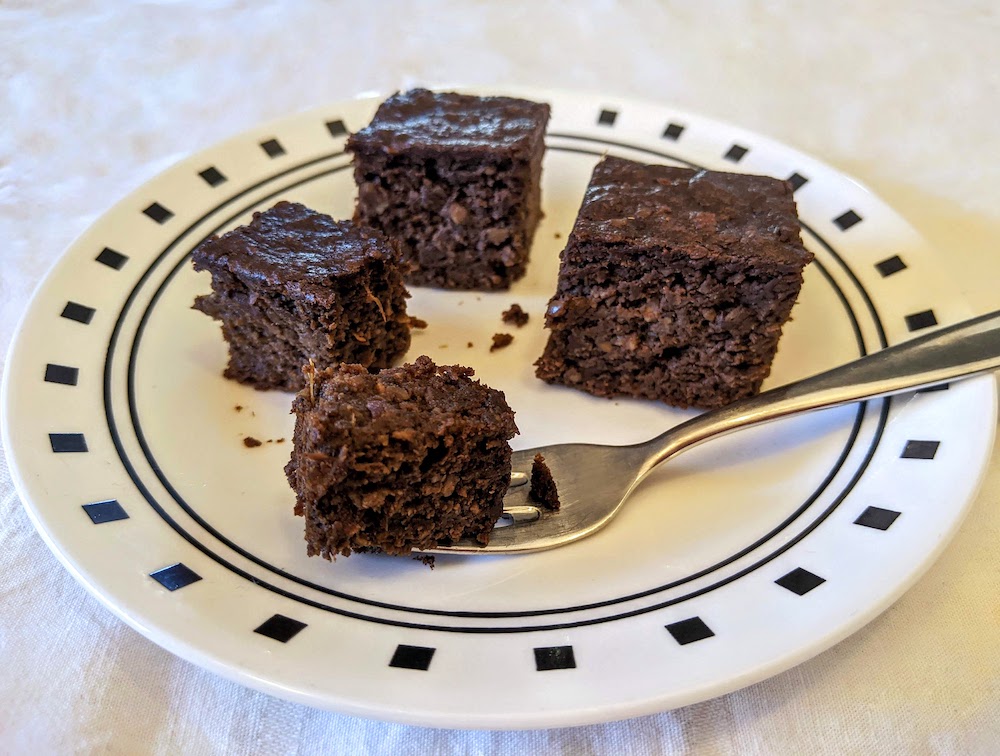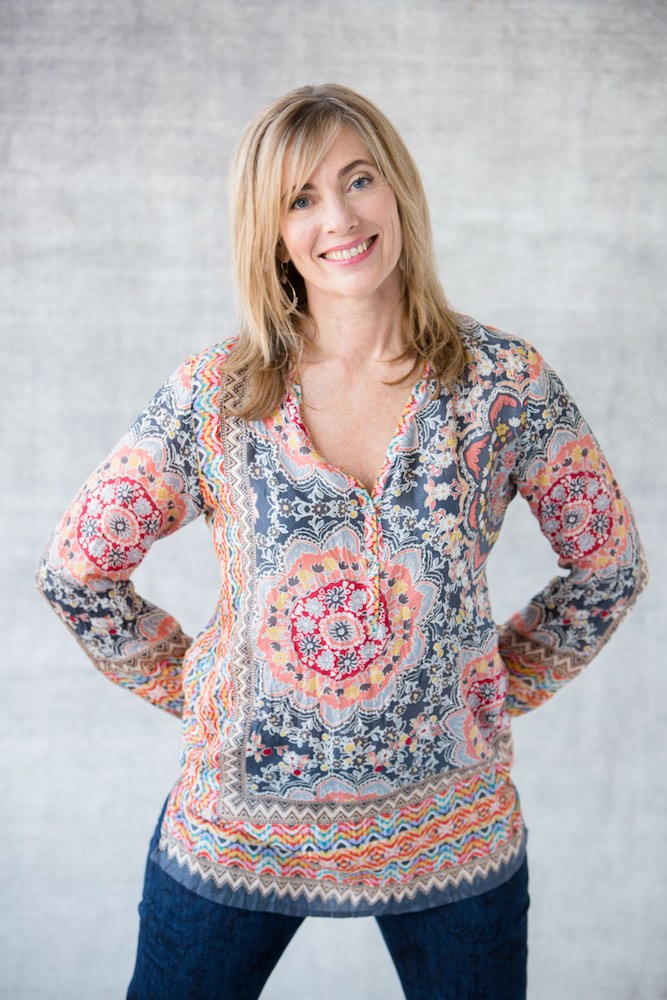Recently, I connected with Desiree Rumbaugh to chat about her upcoming workshops hosted at Breathe. I knew she had been practicing yoga for a long time so I was eager to pick her brain to gain some insights. Since we spoke, “pay for it now or pay for it later” has been echoing in my thoughts. Delaying self-care will only put me in a tougher spot than it is now. Do something today that your future self will be grateful for.
Jane Morimoto: What prompted you to begin exploring yoga?
Desiree Rumbaugh: In the late 80s I was teaching aerobics because the only thing most women did at the gym back then was aerobics. There were very few women lifting weights. My how times have changed! So all of us women were like Jane Fonda, jumping around and then I saw a talk show with a woman who was doing a seated forward bend and I thought “Yoga? How is that exercise?” I don’t understand, what is this “yoga”? So I got curious. Then at an aerobics convention in Los Angeles, I went and took the one yoga class that was offered [out of 25 aerobic classes]. I loved it.
I thought “I am going to start studying this now because I’d rather teach this than aerobics”. But… it was hard to find in the late 80s. Yoga was not everywhere. Fortunately, I was in Southern California, a place in the USA that probably had the most [yoga classes]. A few years later I moved to Phoenix, Arizona, and opened a studio. That worked out well because at that time there were only three studios in Phoenix, only me and two others. One Bikram, one Hatha, and mine that was based on Iyengar. Imagine that – three yoga studios in the whole city! It was great. I’m really glad that I was at the crest of that wave coming through. I’ve seen a lot of growth. We’ve come a long way.
JM: Do you have a favorite flow?
DR: Flow really works for some people but what I do instead is work on my body using the poses. For instance, If I do sun salutations, I might do three slow ones, very purposefully. A flow for me might be three poses strung together, that’s it. If something hurts on this side but not that side, we gotta stop and figure this out. Why does this hurt? We’re not just going to ignore it and move on and gloss over it. We’re going to address it but it takes time and it takes interest.
I’ve seen artists work on their creations, which they care so much about. They’ll spend hours and hours just getting everything right, that’s how I am with the body. I am like an artist of the body. You could say I care this much about how I feel because at the end of the day, it serves me really well, in sickness and in health. I’m so attuned that it does serve me well.
JM: What motivated you on days you felt like skipping practice?
DR: I never feel like skipping practice. I love my yoga practice. I’m hooked on the healing power of yoga because for me there isn’t one way to practice, there are many different ways. Luckily, I learned a long time ago when we were taught how to lie down and put our legs up against a wall. That’s practice. I can lay on some blocks and some balls and call it yoga. I think some people have an idea that a practice has to be hard and sweaty. They might not feel like practicing or their back hurts. My answer to that is, “Well your back hurts, that’s the practice today”. Let’s heal your back and then why would you ever not want to do that, right? Every time I step on the mat, it’s a blissful experience because I’m going to come out feeling better.
Yoga is good for my future self but no one has to force me to want to spend time on the yoga mat. Maybe I’m unusual in that way, I connect the yoga mat with feeling better, and only with feeling better. My goal in teaching is for yoga students to experience the benefits of really knowing how to make themselves feel better on the mat.
JM: How is moving the spine related to our physical ailments?
DR: It took me a long time to realize that the spine is the middle of everything in these yoga poses. If I don’t understand the spine, then I’m just arms and legs moving in shapes. The core and the spine are so central. I spend a lot of time educating people about moving vertebrae off discs and decompressing and having more understanding of what they’re doing with the curves of their spine. When you do understand that and have core strength exercises that relate to the spine, you’re just better at what you’re doing. Generally speaking, people don’t understand their anatomy, for instance, how the neck or shoulder works. That’s why we have these special workshops now to explain everything.
JM: What tools have you learned from yoga that have made a big impact in your life off the mat?
DR: Two things come to mind: One is self-reflection or observation of self, like being able to really watch myself as objectively as possible. The other is to ask questions and to be curious instead of thinking that I know everything. To stay in the seat of the student, the beginner’s mind. I don’t think everybody – unless they have some kind of practice – is good at looking at themselves, not in an objective way, like a third party. I encourage that in students. If you don’t know yourself, you can’t feel it, you can’t see it, there is great value in having a deep connection with yoga. We have to learn how to see and feel what we’re doing because otherwise we don’t know what we’re doing and we are missing out on developing those skills. We don’t know if we are doing a pose correctly. We ask other people, we seek approval. Then to receive feedback, that’s also a skill because we humans tend to get very defensive. These are some things, some areas where I’ve had to grow. Nobody wants to hear any criticism, no one. But we have to learn how to receive it with grace, not ego. When you mature, you don‘t have to get old, you can become more mature even when you’re younger.














